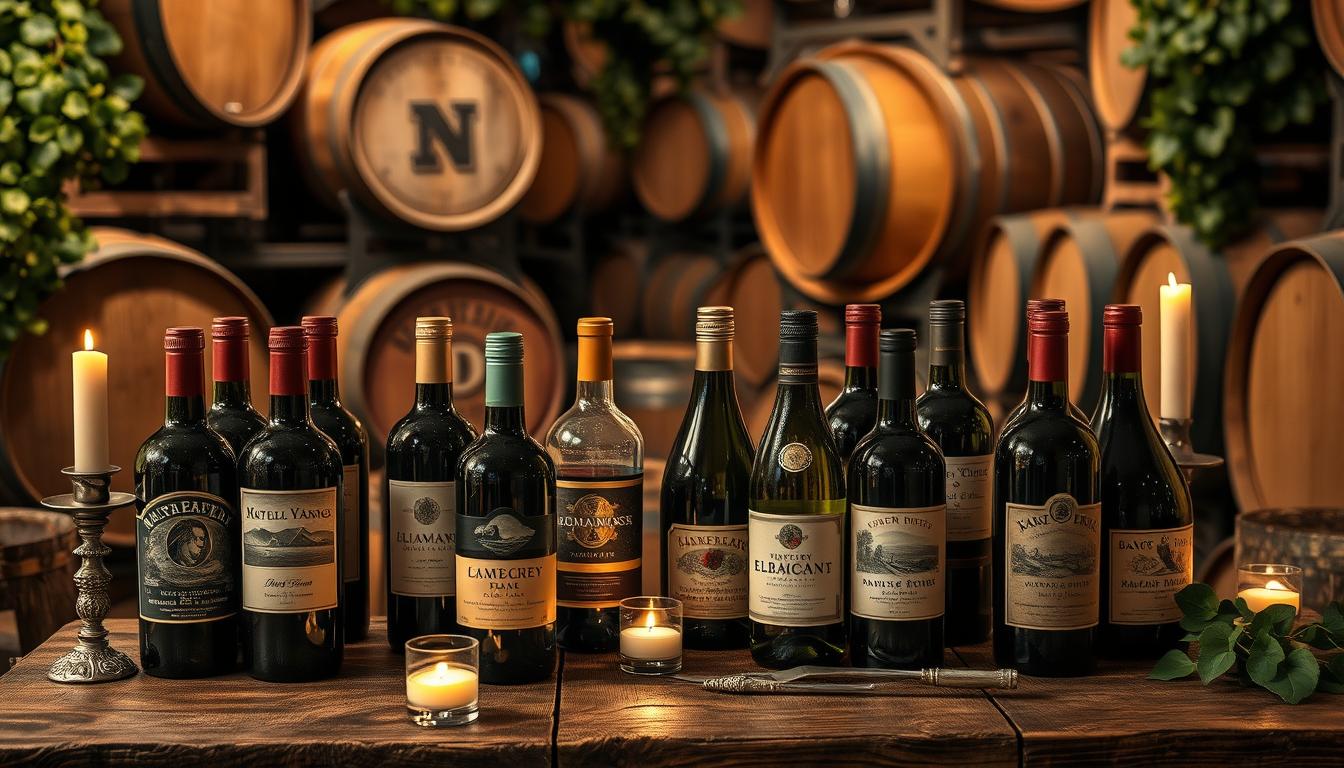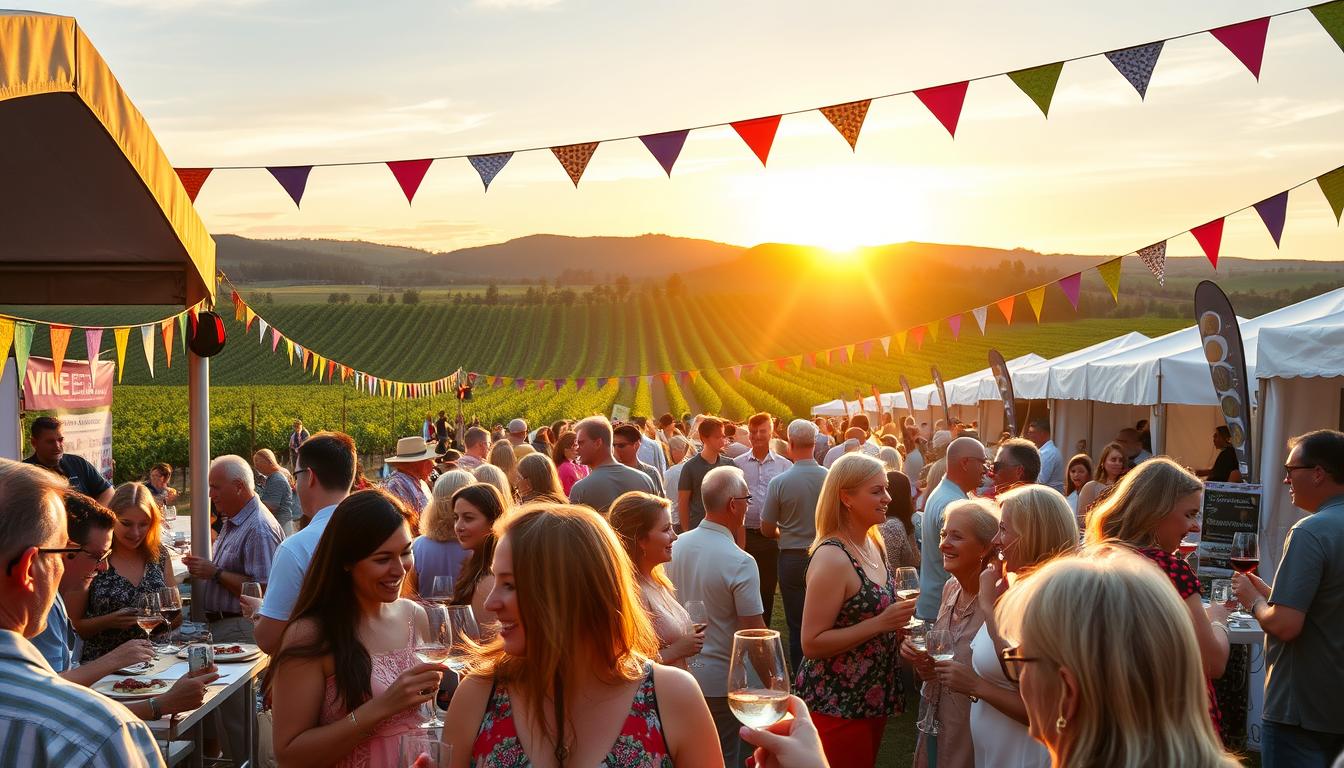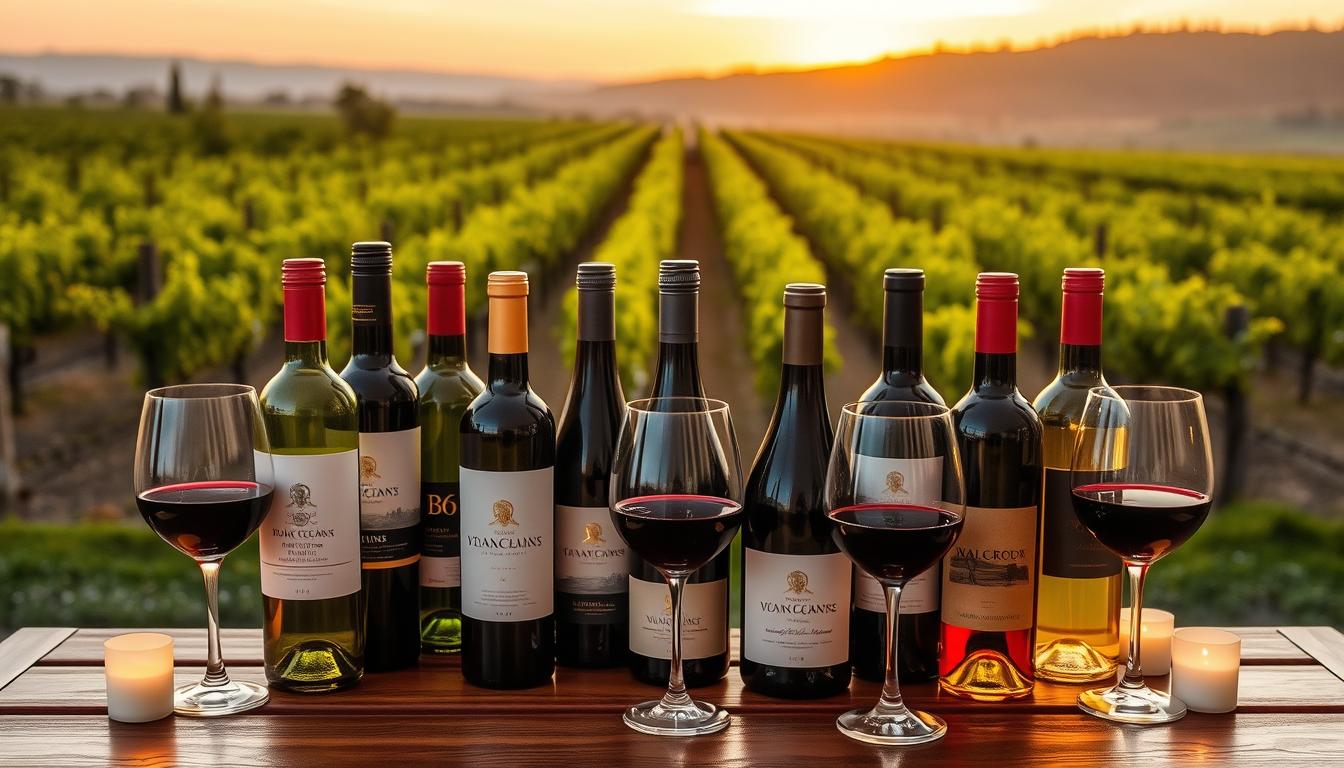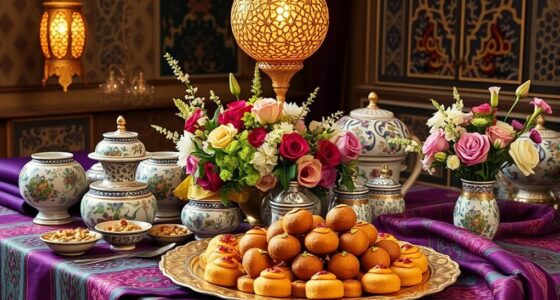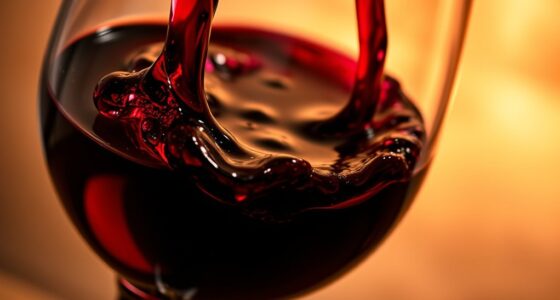Imagine standing in a softly lit cellar, surrounded by rows of bottles that each contain a unique story, a moment frozen in time. The allure of vintage wines is not just in their rich aesthetics but in their ability to forge connections—between you and the craftsmanship of winemakers, between years gone by, and even between generations. As you hold a bottle of aged Cabernet Sauvignon or a rare vintage from the esteemed Châteaux of Bordeaux, you’re not merely a collector; you become a custodian of history, a voyage through taste and time.
At Vintage Cellar, we invite you to explore the fascinating world of collectible wines—where the elegance of a well-curated collection could lead to personal celebrations or astute investments. With the right guidance, your journey into rare vintages can transform your wine cellar into a treasure trove of luxury wine collections marked by quality and provenance. Here, you’ll learn about the defining aspects of vintage wines that capture the hearts of enthusiasts and investors alike.
Key Takeaways
- Vintage wines have unique characteristics that appeal to collectors.
- Understanding the significance of a wine’s vintage can enhance its value.
- Quality storage and insurance are crucial for maintaining a collectible wine collection.
- Rare vintages tend to appreciate over time, making them a potential investment.
- The Vintage Cellar App connects collectors with expert advisors and wine management resources.
- Every bottle in your collection tells a story of heritage and craftsmanship.
Understanding Vintage Wines
When diving into the world of wine, especially in wine collecting, understanding vintage wines is fundamental. Vintage wines are those crafted from grapes harvested in a specific year, and this year is prominently displayed on the label. The climate, weather conditions, and overall harvest quality of that year significantly affect the wine’s taste and aging potential.
What Defines a Vintage Wine?
A vintage wine is characterized by its production year, which is synonymous with the grapes’ harvest period. While many wines are classified as non-vintage, around 98% of Port production falls into this category, indicating a massive focus on non-specific years. Vintage wines are considered a mark of quality, often carrying higher price tags reflecting their rarity, particularly in regions like Port and Champagne. The production of vintage Champagne, for instance, must adhere to strict aging requirements, being matured for at least three years to meet AOC standards.
The Importance of Vintage in Wine Collecting
In the realm of wine collecting, evaluating vintage wines holds great significance. Vintage plays a crucial role in assessing the wine’s unique characteristics, which often vary from year to year. Each vintage tells a story of its conditions, influencing flavors, aromas, and aging capacity. Certain years yield rare vintages that are particularly sought after, leading collectors to research the vintage history of wines like Bordeaux and Burgundy. Understanding these elements empowers collectors to make informed decisions, ultimately enhancing their collections of aged wines.
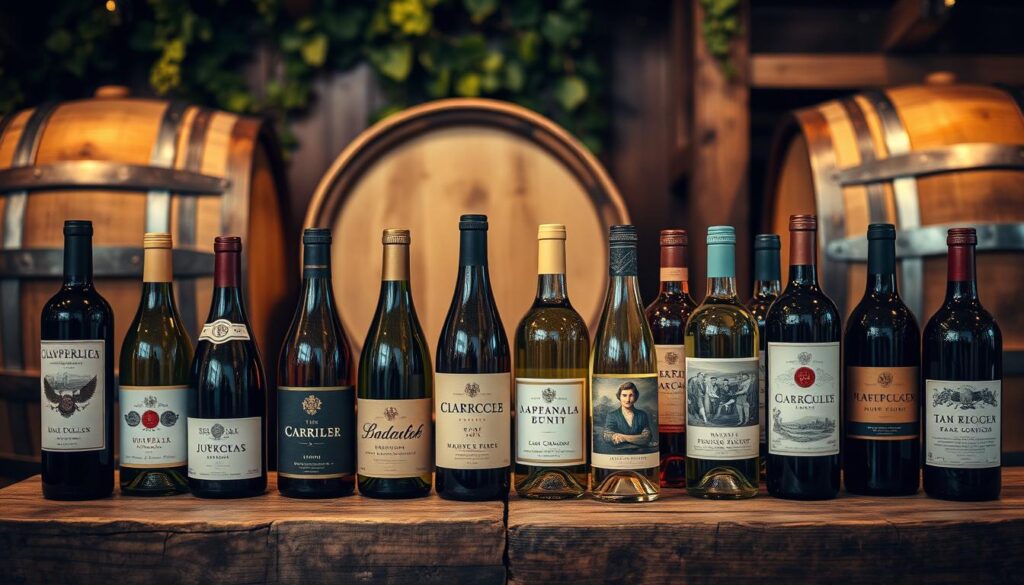
Characteristics of Aged Red Wines
Aged red wines present a captivating journey through their evolved flavor profiles, boasting complexity that showcases their vintage. As time passes, these wines reveal enchanting notes, transitioning from youthful, fruity characteristics to a deeper, more intricate bouquet. Recognizing the essentials of aging helps wine enthusiasts appreciate the nuances that age brings to both structure and taste.
Flavor Profiles of Aged Wines
The flavor profiles of aged red wines are marked by an evolution that reflects their extended cellaring. Early on, these wines may present vibrant fruitiness, yet over time, they develop tertiary aromas and flavors, including:
- Dark fruits
- Herbal notes
- Spices
- Earthy undertones
- Chocolate or leather accents
Wines from revered regions such as Bordeaux and Burgundy often showcase their unique terroirs, further enhancing their complexity. The aging potential varies significantly based on factors like acidity and tannin levels, which play fundamental roles in a wine’s ability to last and improve with time.
Why Age Matters in Wine Quality
Aging critically influences wine quality, particularly for specific varietals such as Cabernet Sauvignon and Pinot Noir. These wines, with their high tannin content, stand the test of time and attain remarkable depth. Factors affecting aging include:
| Factor | Impact on Aging Potential |
|---|---|
| Acidity | Higher acidity contributes to longevity |
| Tannin Levels | Wines with more tannins age better |
| Alcohol Content | Lower ABV (below 13.5%) preferred for aging |
| Residual Sugar | Sweet wines often have the longest aging potential |
Aged red wines provide a rich tapestry of flavors and aromas, taking you on an enticing exploration each time you uncork a bottle. Whether you’re appreciating a classic Bordeaux or a unique vintage from smaller regions, understanding these characteristics elevates your wine experience.
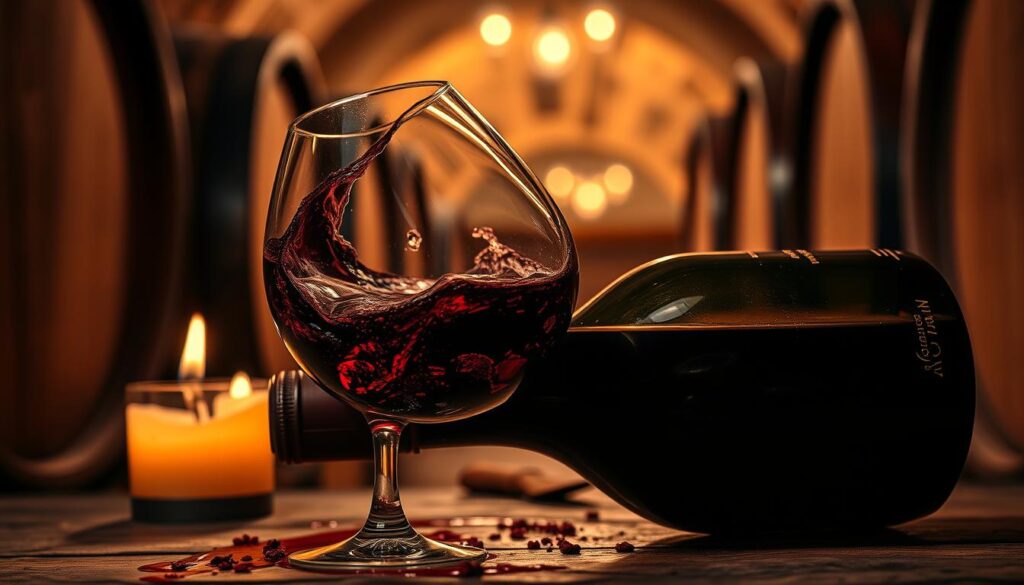
Best Regions for Discovering Rare Vintages
Embarking on a journey to find rare vintages is an exhilarating endeavor for any wine collector. When it comes to sourcing exceptional bottles, certain regions shine brighter than others. Bordeaux and Burgundy have established themselves as icons in the world of fine wines. Each region brings its own flair to the table, creating unique profiles that captivate even the most seasoned enthusiasts. In addition, Barolo and Barbaresco, emerging stars from Italy, offer their own array of remarkable wines waiting to be discovered.
Exploring Bordeaux and Burgundy
Bordeaux is often celebrated for its structured blends, predominantly featuring Cabernet Sauvignon and Merlot. The 2022 vintage has garnered praise for its silky tannins and outstanding aging potential, making it a must for collectors. Meanwhile, Burgundy, famed for its expressive Pinot Noir and Chardonnay, captivates with the quality of its wines. Exceptional years such as 2010 and 2019 have solidified the region’s reputation, while the challenges of the 2013 vintage remind collectors of the unpredictability that can characterize winemaking.
Rising Stars: Barolo and Barbaresco
Barolo and Barbaresco are gaining traction as serious contenders among wine collectors. Made from the Nebbiolo grape, these wines are rich with personality and complexity. Their distinctive profiles are increasingly being recognized, creating excitement and anticipation in the collector market. Additionally, hidden gems like selections from the region of Corsica and innovative wineries such as Domaine Bott are pushing the boundaries of traditional winemaking, yielding wines with unique stories and immense appreciation potential.
| Region | Notable Vintages | Characteristics |
|---|---|---|
| Bordeaux | 2022, 2010, 2019 | Structured blends, silky tannins |
| Burgundy | 2019 | Expressive Pinot Noir, quality Chardonnay |
| Barolo | N/A | Richness, complexity from Nebbiolo |
| Barbaresco | N/A | Elegant structure, aromatic depth |

How to Build a Luxury Wine Collection
Building a luxury wine collection starts with a thoughtful approach that’s vital for both enjoyment and value appreciation. Selecting premium aged wines requires careful consideration of quality, taste, and potential aging benefits. Many wines simply do not improve with age; therefore, your choices should emphasize those that are age-worthy and famous for their ability to mature gracefully.
Curating Your Selection of Premium Aged Wines
Focus on securing collectible wines that can mature over time. The private client services department at SommSelect suggests filling your cellars with wines priced around $45 to $55, which often have aging potential and value retention. Classic regions such as Bordeaux and Burgundy offer fantastic options. For instance:
- Bordeaux: Cabernet Sauvignon and Merlot
- Burgundy: Pinot Noir and Chardonnay
- Italy: Barolo, Barbaresco, and Brunello di Montalcino
These selections possess the right balance of acidity and structure necessary for long-term aging. You may also categorize your wines into “good,” “better,” and “best” segments, facilitating easy purchasing decisions based on your budget and goals.
Tips for Starting Your Wine Cellar Treasures
Your journey into collecting luxury wine collections requires a strategy that balances immediate enjoyment and future investment. Here are key tips:
- Investigate wine scoring systems. Aim for higher scores, often indicating richer fruit profiles with excellent aging potential.
- Plan your investments wisely. For instance, investing in wines like Château Lafite Rothschild 1982 shows substantial returns over time.
- Incorporate flexibility. Adapt your collection based on personal tastes and regional explorations.
- Create an instant-gratification cellar with more mature selections for immediate enjoyment.
Incorporate temperature- and humidity-controlled storage units to preserve your wine cellar treasures properly. As you develop your collection, you’ll build a genuinely personal assortment of luxurious wines that bring pleasure and long-term rewards.
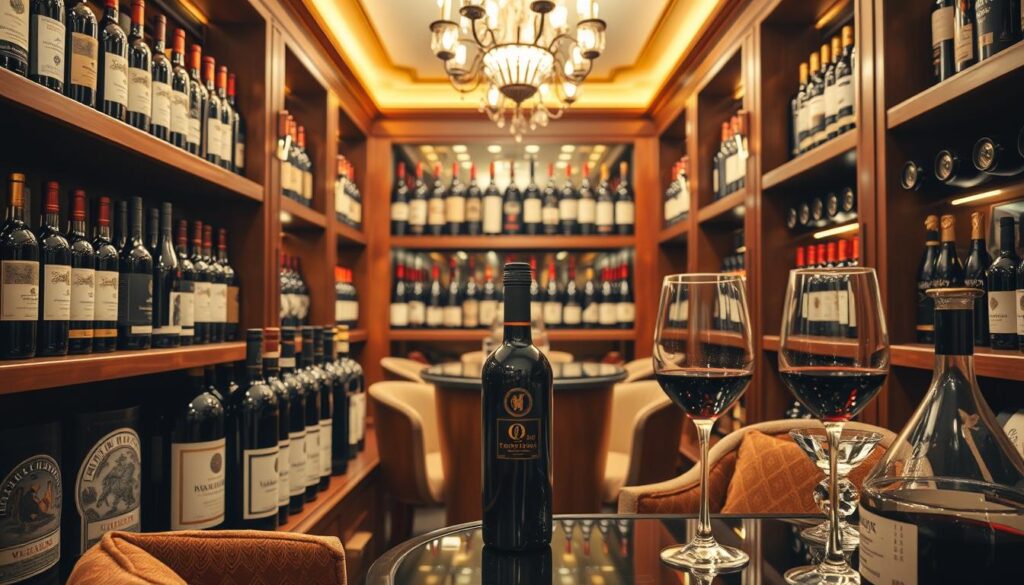
| Wine Category | Price Range | Age Potential |
|---|---|---|
| Good Wines | $25 | Short to Moderate |
| Better Wines | $25 – $60 | Moderate to Long |
| Best Wines | Over $60 | Long to Very Long |
Start curating your collection today and enjoy the process of discovering the exquisite world of premium aged wines.
Top Collectible Wines to Consider
Exploring the world of collectible wines unveils numerous hidden gems that offer exceptional quality and investment potential. Collectors should be mindful of lesser-known producers that deliver exquisite vintage wines, as well as iconic brands recognized for their outstanding consistency. Staying informed about top producers and their offerings is crucial to curating a remarkable collection.
Uncovering Hidden Gems
Some hidden gems in the wine world deserve your attention. These wines not only provide remarkable taste but can also be surprisingly accessible. Consider the following selections: Some of the best white wines you might want to explore include Assyrtiko from Santorini, Greece, and Albariño from Rias Baixas, Spain. Both of these wines have unique flavor profiles that make them stand out among other white wines. With their bright acidity and mineral notes, they pair well with a variety of dishes and are perfect for sipping on a warm summer evening. These hidden gems are definitely worth seeking out for any wine enthusiast looking to expand their palate.
- Phélan Ségur, St-Estèphe – A budget-friendly find available for $49.99, with impressive ratings around 96 from reputable critics.
- La Ca’ Növa “Montestefano,” Barbaresco – Priced between $49.99 and $99.99, it’s celebrated for its quality, receiving mid to high 90s ratings.
- Einaudi “Cannubi,” Barolo – Available from $69.99 to $99.99, boasting ratings from 95 to 97 points, perfect for collectors.
Producers Worth Following
Several top producers consistently create collectible wines, making them essential for your collection. Their ability to produce high-scoring vintage wines is unrivaled:
| Producer | Wine | Year | Price | Ratings |
|---|---|---|---|---|
| Château Canon | Canon, St-Émilion | 2019 | $144.99 | 100 (JA), 98 (DC) |
| Château Montrose | Montrose, St-Estèphe | 2016 | $219.99 | 100 (JS), 100 (JD) |
| Pichon-Lalande | Pichon-Lalande, Pauillac | 2019 | $219.99 | 99 (JD), 98 (JS) |
| Domaine Louis Jadot | Gevrey-Chambertin 1er Cru “Clos St-Jacques” | 2018 | $219.99 – $2249.99 | 98 (VN), 97 (JS) |
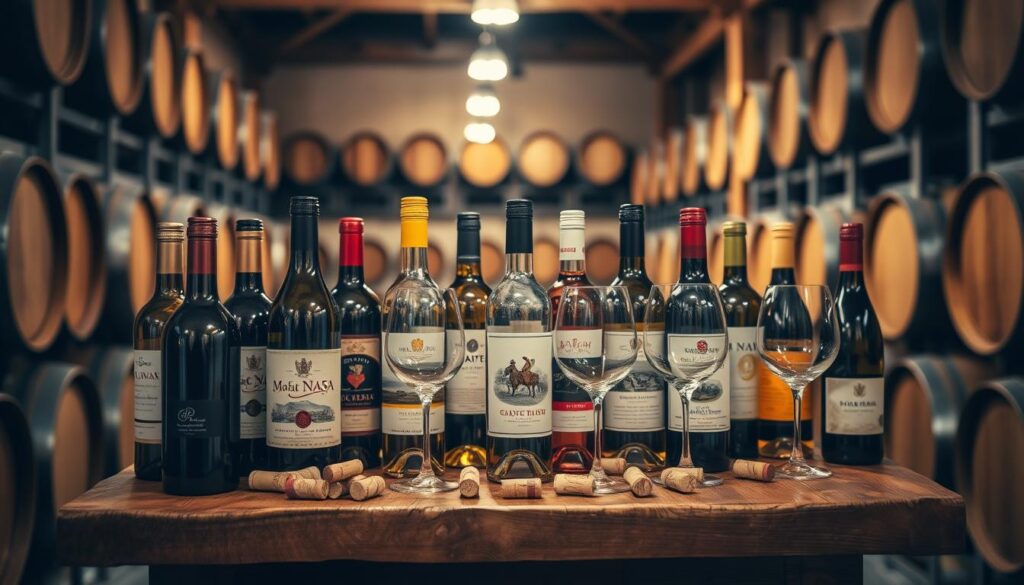
Exclusive Vineyard Selections for Collectors
Exclusive vineyard selections provide a unique opportunity for wine collectors to access some of the finest vintage wines available. These selections often come through carefully structured allocation systems that prioritize loyal customers, ensuring their first pick on limited releases. By understanding these systems, you can enhance your wine collection and develop long-lasting relationships with esteemed vineyards.
The Benefit of Allocation Systems
Allocation systems are essential for collectors seeking exclusive vineyard selections. These models reward loyalty and consistency, allowing you to secure your place among the first in line for limited releases. Utilizing these systems enables you to build a diverse and impressive cellar, featuring sought-after vintage wines. Many vineyards, aware of their clientele’s needs, facilitate access through various membership clubs, each offering distinctive pricing and purchasing incentives.
How to Gain Access to Limited Releases
To gain access to limited releases, consider joining a wine club that aligns with your interests. For example, the Collector’s Selection offers 6 bottles for approximately $540, while the Legend’s Selection runs at about $1080 for the same quantity. Annual memberships, such as Collector’s Club and Legend’s Club, provide more flexibility and access, costing $2160 and $4300 respectively. You can take advantage of fall and spring shipment deliveries to ensure regular updates to your collection.
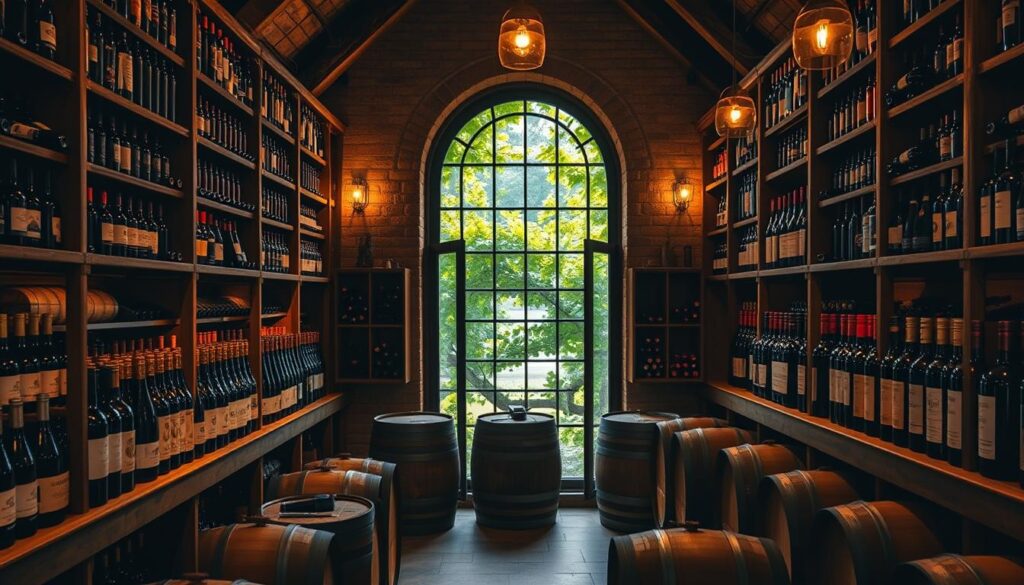
For those looking for Italian wines, options like the Essential and Premium Italian Wine Clubs present unique selections for around $215 and $290 for 6 bottles. Understanding delivery timelines, which typically take 4-6 weeks for shipments to the USA, allows you to plan your acquisitions thoughtfully. Through keen observation and strategic decision-making, you can unlock opportunities for acquiring memorable vintage wines, elevating your collection to new heights.
Vintage Wines for Smart Investing
Investing in vintage wines has garnered interest from collectors looking for a unique and potentially lucrative addition to their portfolios. When you consider wine valuation, key factors come into play, including quality, demand, and historical performance of specific vintages. Understanding these elements can lead you to smart investing opportunities that yield impressive investment returns.
Understanding Wine Valuation
To truly appreciate wine valuation, you should focus on a few critical aspects:
- Rarity: Only 500 out of over two million wine producers globally create wines deemed worthy of investment.
- Price Range: A good investment wine typically falls between $150 and $200 per bottle.
- Region: Burgundy and Champagne wines have been increasing in price, with Burgundy in particular experiencing significant scarcity.
- Market Trends: Prices for top Burgundies have doubled or tripled recently, while the global demand for sweet fortified wines like Vintage Port has waned, leading to reduced prices.
Factors Influencing Wine Investment Returns
Your wine investment returns will largely depend on various factors that influence market value:
- Auction Dynamics: Auctions typically raise bids by 20-25% for fine and rare wines.
- Case Buying: Purchasing wine in cases (up to twelve bottles) can increase value, provided you store them appropriately for aging.
- Long-Term Potential: Fine wines are often viewed as medium to long-term investments, typically spanning 5 to 10 years.
- Emerging Markets: Regions like Chile and Rioja hold potential for profitable discoveries.
Collectors often find a sense of pride in their wine collections, and such endeavors can also be social experiences, allowing enthusiasts to share their selections with friends. Keep in mind, associated costs like storage, cataloguing, insurance, shipping, and commissions can impact your overall profits.
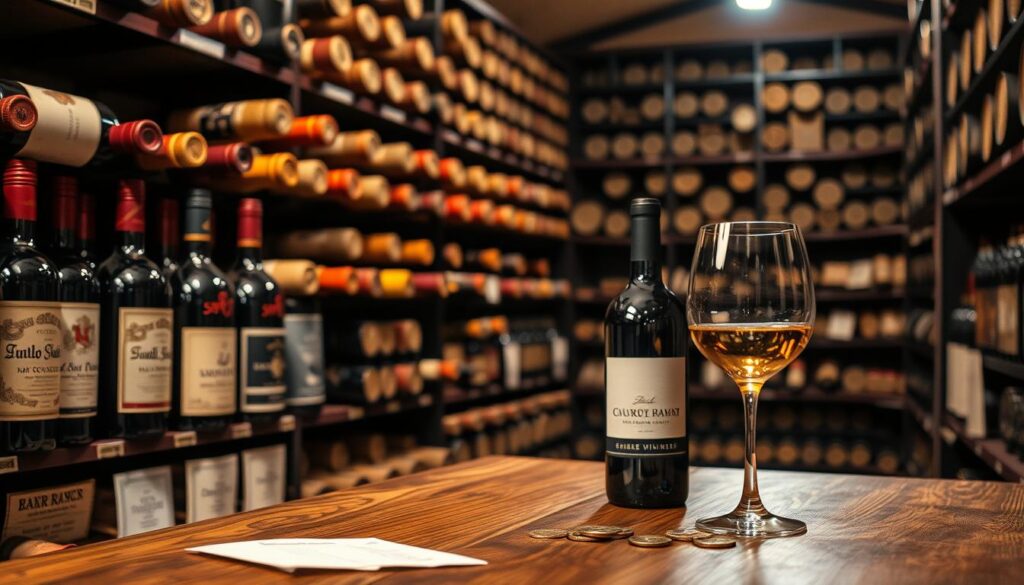
| Wine Region | Investment Potential | Average Price Range |
|---|---|---|
| Burgundy | High, particularly Grand Cru options | £6,000 and up |
| Bordeaux | Stable but less exciting returns | $150 – $200 |
| Champagne | Strong due to scarcity and age-worthiness | $150 – $250 |
| Barolo (2016 Vintage) | Highly recommended for investment | $100 – $300 |
By exploring these factors and making informed decisions, you can navigate the intricate landscape of vintage wines with confidence, maximizing your potential for excellent investment returns.
Maintaining the Quality of Your Collection
Proper wine storage is crucial for maintaining quality in your vintage wines. Understanding essential storage conditions will help ensure that you preserve the exquisite flavors and textures of your collection. Adhering to specific guidelines related to temperature, humidity, and light exposure creates an optimal environment for your wines, allowing them to age gracefully.
Wine Storage Essentials
To protect your vintage wines, consider the following essential storage conditions:
- Temperature: Ideal temperatures for wine storage range between 55-65°F. Rapid temperature fluctuations can damage your wines.
- Humidity: Maintaining a humidity level between 50-70% is vital. Low humidity can dry out corks, allowing air to seep in and spoil the wine.
- Light Exposure: Protect your collection from direct sunlight. Ultraviolet rays can degrade wine quality over time.
- Vibration: Minimizing movement is essential. Constant vibration can disturb sediments and negatively impact aging.
- Storage Position: Store bottles horizontally to keep the cork moist, preventing it from drying out and allowing air to enter.
How to Care for Your Vintage Wines
Caring for vintage wines involves attentive practices that include regular monitoring and maintenance. Here are some key aspects to consider:
- Regular Check-ups: Inspect bottles periodically to assess cork integrity and any signs of damage.
- Optimal Consumption Windows: Familiarize yourself with the best times to enjoy each vintage. Many wines have ideal drinking periods that ensure the best experience.
- Professional Storage Solutions: If you lack space or resources for personal wine cellars, consider specialized off-site wine storage facilities. These places offer ideal conditions for your collection, typically for a monthly fee per bottle.
- Insurance Options: For collections valued at $85,000 or more, tailored insurance policies protect your investment. This step safeguards against potential risks like water damage, which accounted for 37% of claims in 2019.

By understanding these essentials of wine storage and care, you can ensure that your vintage wines remain exquisite and enjoyable, enhancing your collection’s overall value and experience.
Celebrating Vintage Wines at Events
Hosting an event to celebrate vintage wines presents a unique opportunity to share exceptional selections with friends and fellow enthusiasts. Organizing a memorable wine tasting can elevate the experience, allowing participants to appreciate the distinct characteristics of each vintage while savoring gourmet food. Thoughtful food pairings play a crucial role, enhancing both the enjoyment and depth of flavors found in your chosen wines.
Hosting a Wine Tasting Night
To create an engaging atmosphere for your wine tasting night, consider these tips:
- Curate a selection of vintage wines from various regions, showcasing diversity in flavor profiles.
- Prepare a guided tasting sheet to help guests note their impressions and favorite wines.
- Incorporate some storytelling about each wine, enhancing the overall experience through history and background.
Pairing Vintage Wines with Gourmet Food
Food pairings are essential when celebrating vintage wines, as they highlight the unique qualities of each selection. Here are some classic pairings to consider:
| Wine Type | Recommended Food Pairing |
|---|---|
| Bold Red | Robust Cheeses |
| Crisp White | Seafood Dishes |
| Sweet Wine | Chocolate Desserts |
| Rosé | Grilled Vegetables |
Select gourmet food that not only complements but enhances your vintage wines, creating a memorable culinary experience that resonates with your guests. Celebrating vintage wines is about more than just drinking; it’s an art that combines storytelling, tasting, and sensations around a table filled with exquisite flavors.
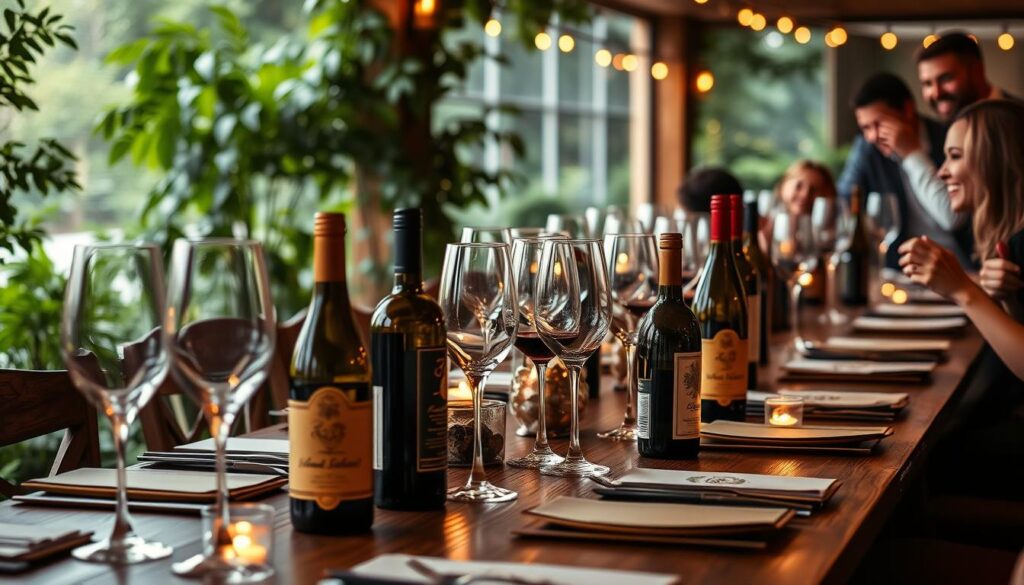
Legal Considerations for Wine Collectors
Understanding the legal landscape surrounding wine collection is imperative for any serious enthusiast. Various legal considerations come into play, particularly regarding wine regulations that vary from state to state. Collectors should familiarize themselves with these rules to navigate the complexities of acquiring, storing, and transporting their cherished wines.
Understanding Wine Regulations in the U.S.
In the United States, federal and state regulations dictate critical aspects of wine collection. For instance, wines imported into the U.S. must adhere to specific labeling requirements based on their alcohol content. Wines containing 7 percent or more alcohol by volume require a Certificate of Label Approval (COLA) to ensure compliance with TTB regulations. Legal considerations such as these help ensure that wine collectors can enjoy their collections without encountering legal hurdles.
Shipping and Transporting Your Collection
When it comes to shipping wine and transporting your collection, adherence to local laws is paramount. Many states enforce age verification requirements and may require specific licenses for transporting collections. Non-compliance could result in hefty fines or the confiscation of valuable bottles. Familiarizing yourself with the wine regulations relevant to your destination can help secure a smooth and hassle-free delivery process.
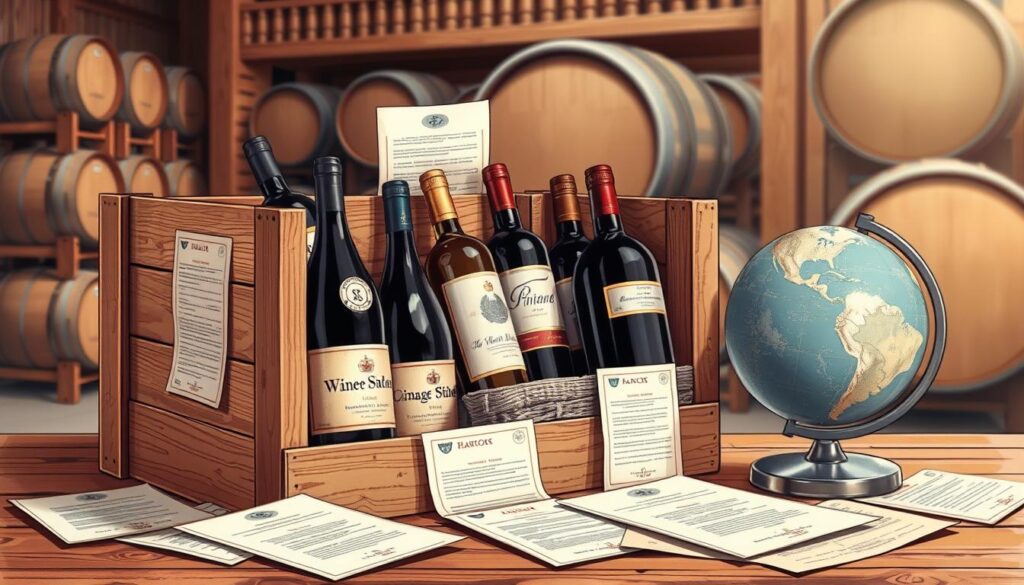
| Regulation Type | Description |
|---|---|
| Federal Regulations | Includes regulations on labeling, tax requirements, and importing procedures. |
| State Regulations | Each state has specific laws regarding the sale, shipment, and transport of wine. |
| Licensing Requirements | Many states require collectors to obtain a license to import or sell wine. |
| Age Verification | Collectors must ensure compliance with age verification laws when shipping or transporting wine. |
Resources for Wine Collectors
When it comes to enhancing your wine collection, numerous resources for collectors are available. Books and online courses provide essential knowledge that helps you appreciate vintage wines and understand the nuances of wine investment. Reputable wine merchants and auction houses also play a pivotal role in sourcing collectible wines, connecting you to some of the most sought-after vintages in the market.
Books and Online Courses
To develop a deeper understanding of vintage wines, consider exploring a variety of literature and virtual coursework. Here are several outstanding options:
- The Wine Bible by Karen MacNeil – A comprehensive resource on everything wine-related.
- Wine Folly: The Essential Guide to Wine by Madeline Puckette – Perfect for beginners and experienced collectors alike.
- Online Wine Courses – Platforms like MasterClass and Coursera offer wine appreciation courses taught by experts.
Wine Merchants and Auction Houses
The right merchants and auction houses can complement your collecting journey significantly. They provide access to rare vintages and valuable collectibles. Notable places to explore include:
| Wine Merchant | Specialty | Location |
|---|---|---|
| Wine.com | Wide selection of vintage wines | Online |
| Sotheby’s Wine | High-end auction house for rare wines | Various locations |
| Christie’s | Exclusive auctions featuring rare vintages | Worldwide |
| K&L Wine Merchants | Fine wines and collectibles | California |
Utilizing these resources for collectors ensures you remain informed and connected to the exciting world of vintage wines.
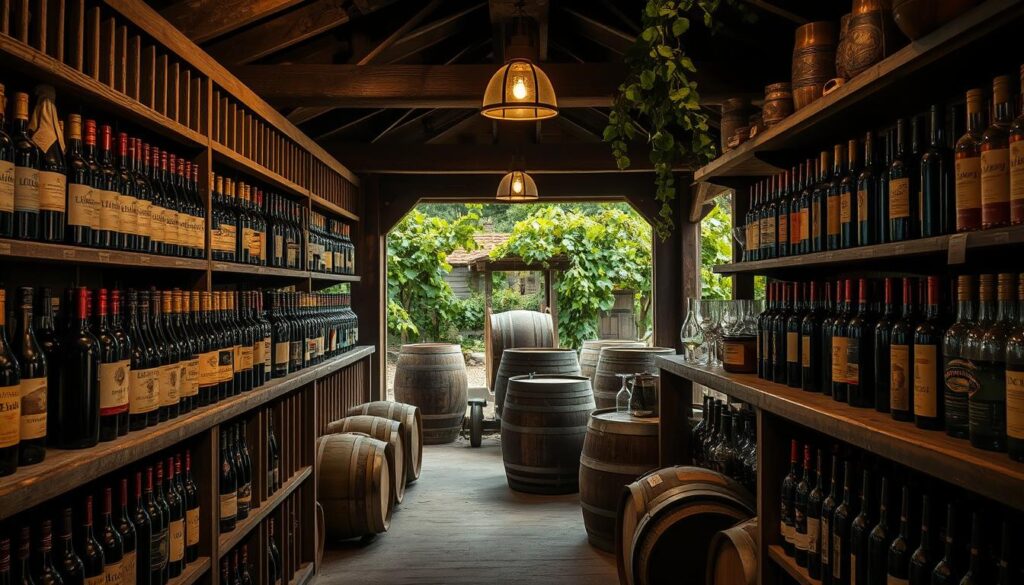
Conclusion
The journey of collecting vintage wines is not solely about the bottles you own but the rich experiences and captivating stories they embody. As wine collectors navigate this intricate world, they uncover the nuances that make vintage wines unique. By understanding the market and the significance of age, you can elevate your luxury collections and create a remarkable assortment of rare vintages that reflect your personal taste as well as your investment objectives.
Proper selection and storage are essential in maintaining the quality of your vintage wines. You can ensure that your collection not only appreciates over time but also retains the integrity that enhances your tasting experiences. Engage actively with the wine community to stay abreast of trends, allowing you to discover hidden gems and foster connections that enrich your journey as a collector.
Ultimately, whether you’re drawn to the elegance of a well-aged Bordeaux or the vibrant notes of a youthful varietal, the world of vintage wines offers endless possibilities. By embracing these elements and curating with intention, you can enjoy a fulfilling hobby that celebrates the beauty of wine and the joy of collection.
